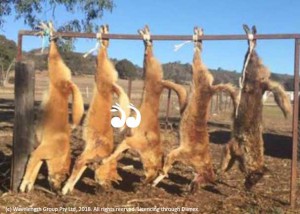Sheep Set to Make a Comeback
THE recent success of a wild dog program is making sheep a viable option in the Upper Hunter again.
The Local Land Services in the Hunter has coordinated a new program, using baiting, trapping and shooting simultaneously and targeting hot spots identified by local sheep farmers.
Craig Murphy, the chair of the Hunter Valley Combined Wild Dog Group, said the appointment of three professional wild dog controllers in the area had yielded benefits.
“We identified hot spots and they allocate a number of days to work in each area and because everyone is working together they can track the dogs across private land, state land, crown land and get into the parks,” said Mr Murphy.
“They got five dogs on Brian Hunt’s property (near Murrurundi), they were enormous big dogs and there are still more around there,” he said.
“Having professionals on the ground to come in an help is working, before it was case by case and reactive and the dogs cover such a wide area, but now they are tracking them across a bigger area,” he said.
“Now if you sheep are being killed you get access to funding for the program and they have relaxed the fees.
“I believe we’ve finally shown the need, they’ve listened to us and we couldn’t be more grateful.
“It makes it viable now for people to think about going into sheep after the drought.
“You can get a lamb on the ground and sold within 12 months, sheep are quicker and now that we have this help there is more confidence to go back into sheep,” he said.
“Sheep prices are phenomenal with lambs selling for $280, so it will be the quickest way for some people to get out of the drought when it break,” said Mr Murphy.
Richard Aly, senior bio-security officer for Local Land Services – Hunter said they have caught 70 problem dogs in only 11 months with the program and the key to the success has been found in what sheep farmers were doing 100 years ago.
“We used to have sheep across wide areas and now we have sporadic sheep farmers throughout the district and they wear the brunt of the wild dogs,” said Mr Aly.
“And some of the dogs made characters of themselves where they would notoriously pick on that particular enterprise,” he said.
“As a government agency helping those land owners it was a real cat and mouse game,” he said.
“So producers came together in a crisis and we looked at why we have such a problem now, the history of the area and one thing really stood out, we were having a single method approach of baiting.
“And you need to have every tool in your tool box and some of these old dogs were bait avoiders so putting trappers on the ground they not only could track those particular dogs.
“If we baited 100 dogs and we didn’t get the right one, the impact still continued, so the trappers were able to hone in on the problem dog and that impact would be alleviated.
“We’ve had really good success since the initiation of the new wild dog problem and now what we are doing is coupling that with a planning approach and really organising ourselves.
“We were too reactive and behind the eight ball before, but with a proactive approach we are getting into the back country where the dogs are coming out of and finding that we don’t need to be as reactive now.
“We’ve removed 70 problem dogs in the past 11 months and they’re not general wild dog populations they are specific problem dogs and that’s relevant to the size of the problem in the Upper Hunter.
“We’ve mapped the area and listened to the local history of controlling dogs; for example when you look at the remnants of the dingo fence on the Barrington, that was put there for a reason in the early 1900’s and we’ve come back full swing and we’ve got exclusion fences up there now almost 100 years later and it’s really interesting following that path.
“And we’re back using trappers which was a traditional method, that is working again for us today plus we have better technology to be more effective now,” he said.
“The relief for farmers just can’t be measured, to be having sheep indiscriminately killed and struggling with the drought was demoralising, but now we are seeing some producers who have brought sheep and put them in the hot zones, which we would have never predicted and they have the confidence they have the support to do that,” he said.
“The Hunter is sheep country and it has a lot of producers thinking about getting back into sheep and I think it’s the way forward,” Mr Aly said.
There is a four year map based approach for managing dogs in the Upper Hunter and each year the results are reviewed by landowners and wild dog groups to ensure the plan is targeted and effective.
The Australian Wool Innovation have assisted with funding the new program, which is rebuilding confidence in the sheep industry.
If producers need help please contact the Local Land Services office in Scone: 0429 722 944
Related stories:
- Local Pet Plans More Proactive – July 12, 2018;
- 4,647 Less Ferals in the Upper Hunter – July 11, 2018;
- Farmers Hope Deputy Premier Listens – June 4, 2018;
- Autumn Aerial Baiting Underway – May 17, 2018;
- Calling Fringe Dwellers – February 16, 2018;
- Controlling Pests in Dry Times – February 2, 2018;
- Editorial: Last Hurdle for Sheep Farmers – September 19, 2017;
- Sheep Farmers Hopeful – September 19, 2017;
- Tackling Wild Dogs – November 7, 2017;
- 700 Dogs Taken – July 11, 2017;
 scone.com.au
scone.com.au